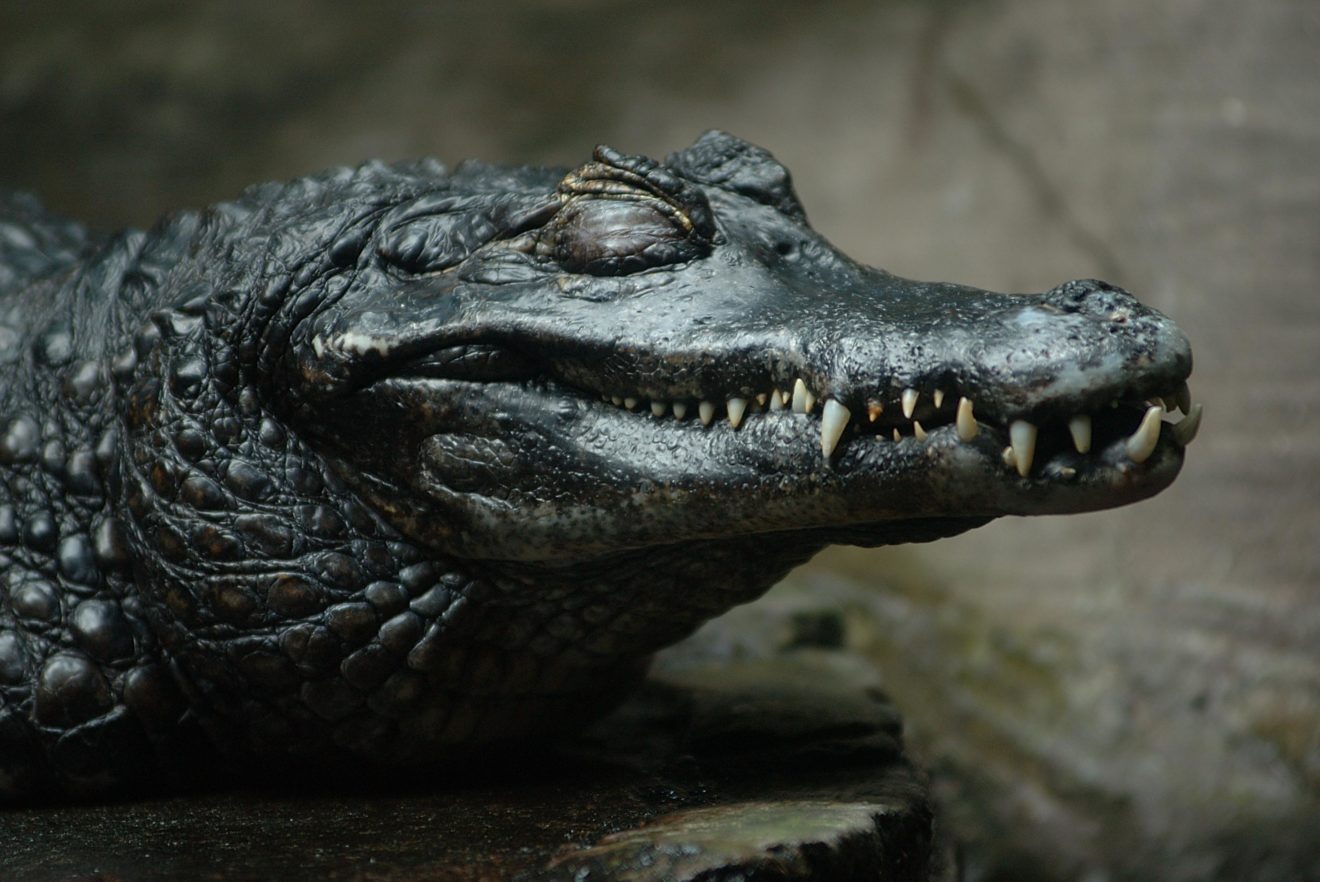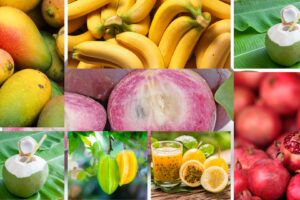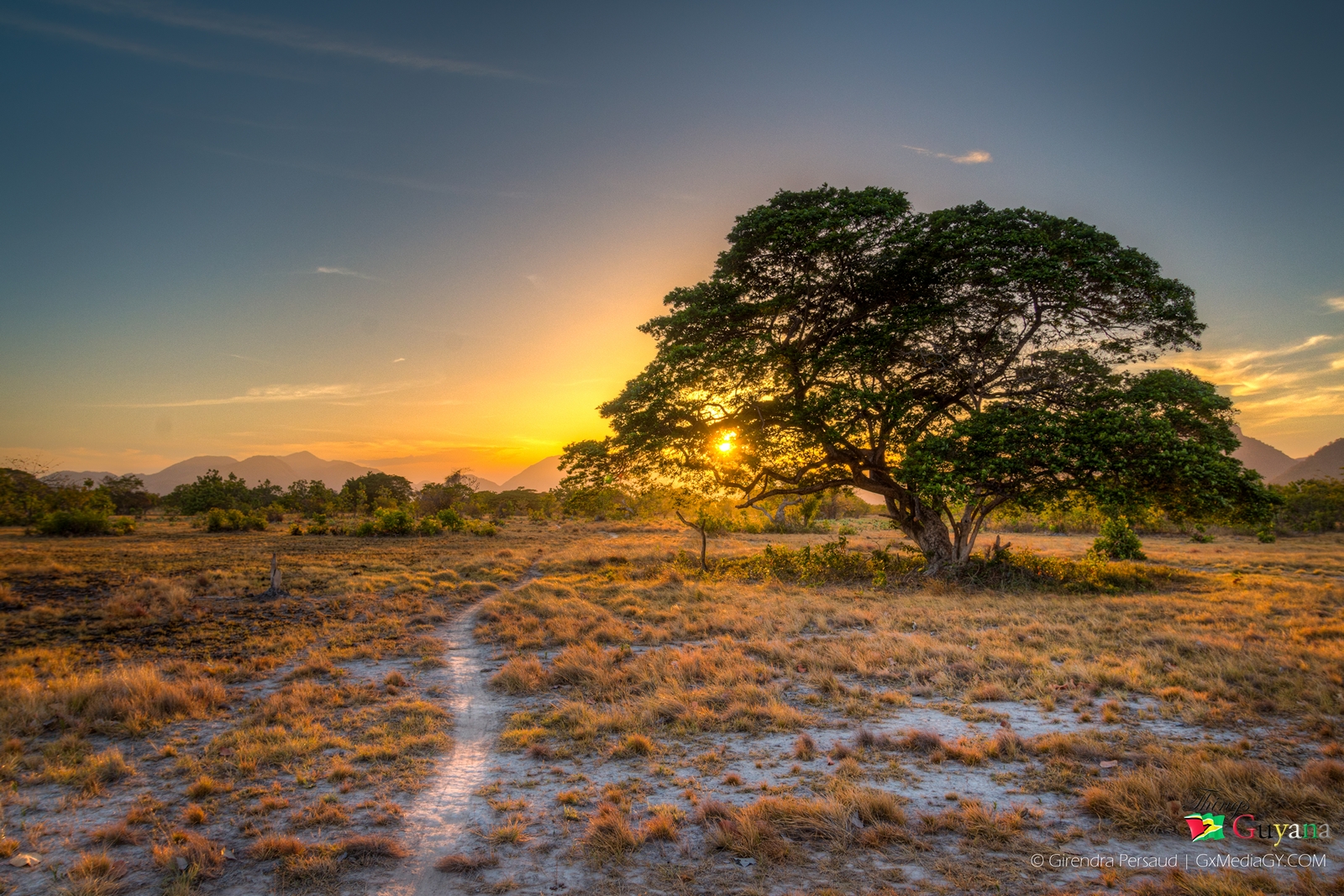The black caiman is the largest member of the alligator family and the largest predator in the Amazon River basin, with adult males averaging 4–5 metres (13.1–16.4 feet) in length. The species gets its name from its dark, black skin coloration, which provides camouflage during nocturnal hunts and is thought to help absorb more heat. The black caiman is a species of large crocodilian and, along with the American alligator, is one of the biggest extant members of the family Alligatoridae and order Crocodilia.
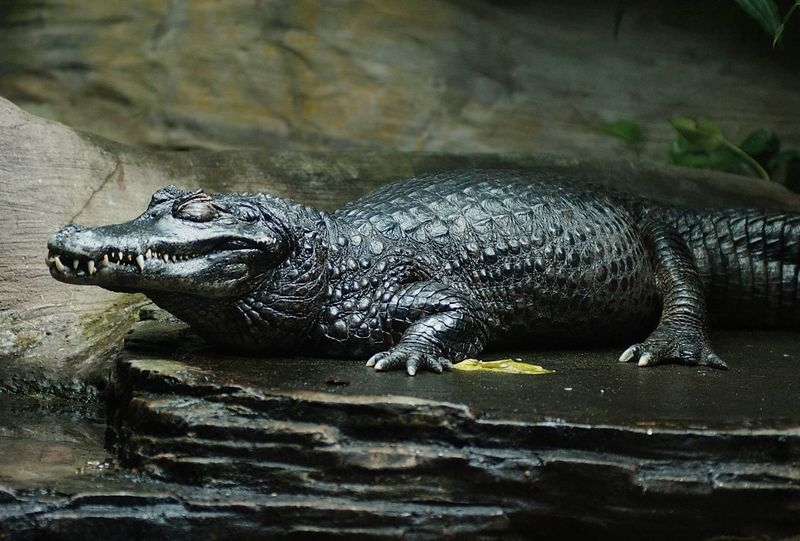
Black Caiman – http://www.animalspot.net/wp-content/uploads/2018/06/Pictures-of-Black-Caiman.png
Other Species Of Caiman Found In Guyana
- Spectacled Caiman (Caiman crocodilus) – T
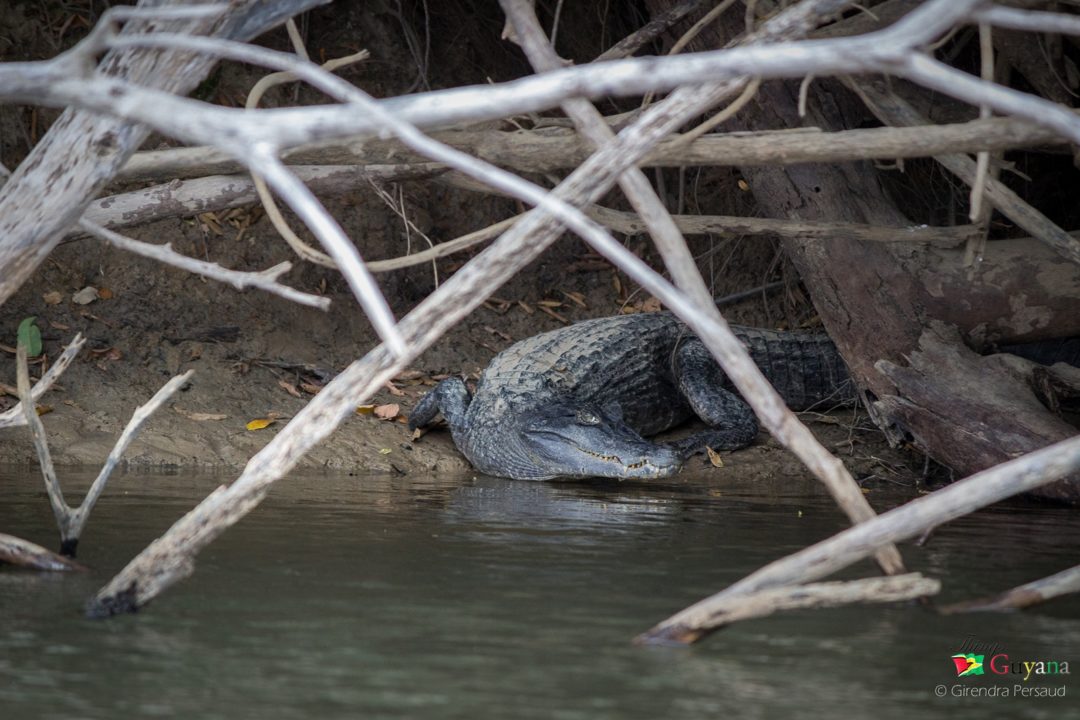
The black caiman watches a tour boat on the Rupununi River
his is also known as the white caiman or common caiman. It is a crocodilian reptile found in much of Central and South America. The caiman’s common name comes from a bony ridge between the eyes, which gives the appearance of a pair of spectacles. Overall the caiman has a typical crocodilian gray-green coloration but this species has been known to change color. During colder weather, the black pigment, found within their skin cells, will expand, making them appear darker. They eat a variety of invertebrates such as insects, crustaceans, and molluscs. Larger spectacled caimans eat fish and water snails.
- Two species of Dwarf Caiman – 1/ Cuvier’s Dwarf Caiman (Paleosuchus palpebrosus) and 2/ Schneider’s Dwarf Caiman (Paleosuchus trigonatus) – Both species prefer cooler waters than other crocodilian species and they lack the ridge nestled between their eyes like the spectacled caiman and black caiman, hence they are called “smooth front” caimans. Their range includes the Amazon Basin of Bolivia, Brazil, Colombia, Ecuador, French Guiana, Guyana, Paraguay, Peru, Surinam and Venezuela. Cuviers and Schneiders inhabit clear, clean fast moving waters with waterfalls and rapids; they are known to be terrestrial and may frequently be seen resting along the edge of water bodies. The two species are known to breed late in the dry season with the hatchlings emerging with the rains filling in the creeks and streams.
Scientific Classification of the Black Caiman
-
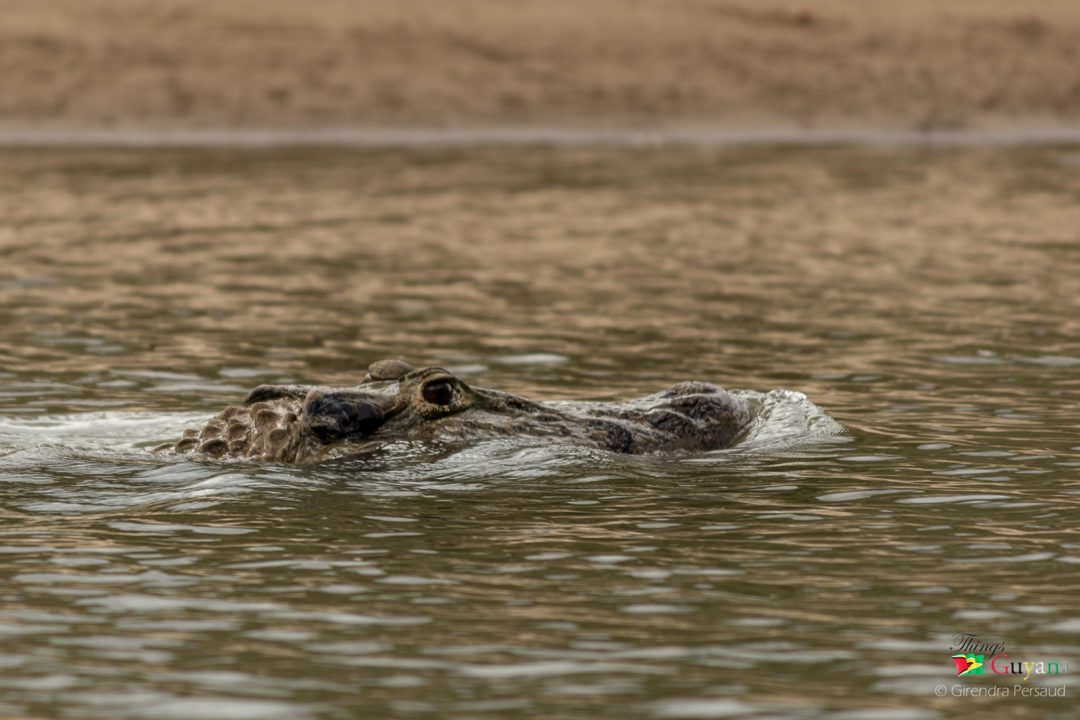
Caiman swimming along side a passenger boat in the Rupununi River
Black Caiman – Melanosuchus niger (Scientific name)
- Kingdom: Animalia
- Phylum: Chordata
- Class: Reptilia
- Order: Crocodilia
- Family: Alligatoridae
- Genus: Melanosuchus
Gray, 1862 - Species: M. niger
Diet of the Black Caiman
Black caimans are apex predators with a generalist diet, and can take virtually any terrestrial and riparian animal found throughout their range. Similar to other large crocodilians, black caimans have even been observed catching and eating smaller species, such as the spectacled caiman and sometimes cannibalizing smaller individuals of their own kind. Their prey also includes capybara, fish, turtles, deer and large adults can even devour other powerful predators such as anacondas, jaguars and pumas. Hatchlings mostly eat small fish, frogs, and invertebrates such as crustaceans and insects, but with time and size graduate to eating larger fish, including piranhas, catfish, and perch, which remain a significant food source for all black caimans. The black caiman normally grabs hold of an animal and drowns it rather than killing it by ripping, since its teeth are more suitable for holding than tearing. The prey is swallowed whole.
Tip: A full grown black caiman is no match for a pack of adult giant river otters who have been recorded chasing black caimans away from their territory.
Reproduction of the Black Caiman
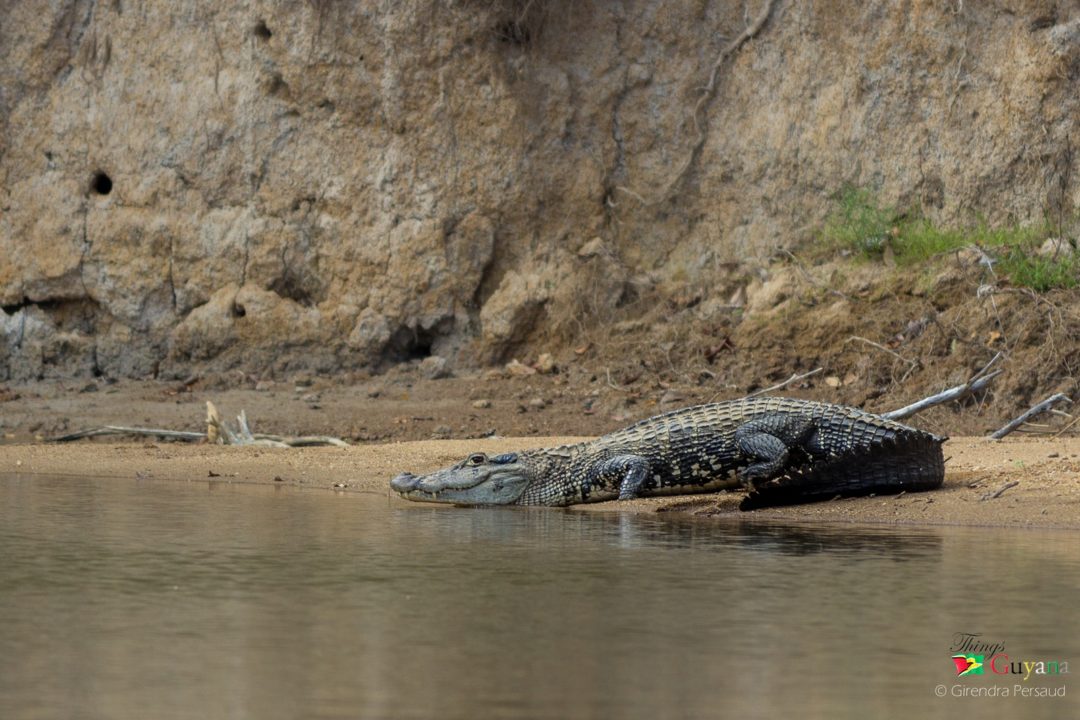 At the end of the dry season, females build a nest of soil and vegetation; they then lay up to 65 eggs which hatch in about six weeks, at the beginning of the wet season, when newly flooded marshes provide ideal habitat for the juveniles once hatched. The eggs are quite large and hatching is said to occur between 42 and 90 days after the eggs are laid. When the young caimans are ready to emerge from the eggs, they will make chirping sounds which will alert the mother. Females sometimes carry hatchlings from the nest to the water in their mouths and place them in a ‘holding pool’ area. After hatching, the mother will try to look after her young for several months but the baby caimans are largely independent and most do not survive to maturity. The female black caiman only breeds once every 2 to 3 years.
At the end of the dry season, females build a nest of soil and vegetation; they then lay up to 65 eggs which hatch in about six weeks, at the beginning of the wet season, when newly flooded marshes provide ideal habitat for the juveniles once hatched. The eggs are quite large and hatching is said to occur between 42 and 90 days after the eggs are laid. When the young caimans are ready to emerge from the eggs, they will make chirping sounds which will alert the mother. Females sometimes carry hatchlings from the nest to the water in their mouths and place them in a ‘holding pool’ area. After hatching, the mother will try to look after her young for several months but the baby caimans are largely independent and most do not survive to maturity. The female black caiman only breeds once every 2 to 3 years.
Did You Know?
Many predators, including various fish, mammal, reptile and even amphibian species, feed on caiman eggs and hatchlings.
Habitat of the Black Caiman
They are restricted to South America, being found in Bolivia, Brazil, Colombia, Ecuador, French Guiana, Guyana, and Peru. They are found in various freshwater habitats such as slow-moving rivers, streams, lakes, flooded savannahs and wetlands.
Some Fun Facts about the Black Caiman
- The Black Caiman has red eyes, over which there is a bony ridge that continues down the snout. The shape of the skull distinguishes this species from the other caimans. The snout is narrow and the eyes very big. The number of teeth varies between 72 and 76.
- They have thick, powerful tails and webbed feet which they use to propel themselves through the water, making them excellent swimmers.
- Their general appearance is similar to the American Alligator (Alligator mississippiensis).
- Their lower jaw has grey banding (brown in older animals) and pale yellow or white bands are present across their flanks of the body, although these are more prominent in juveniles.
Caimans in Guyana
Guyana has four species of caimans as said above: 1/ Black Caiman – Melanosuchus niger, 2/ Spectacled Caiman (Caiman crocodilus), 3/ Cuvier’s Dwarf Caiman (Paleosuchus palpebrosus) and 4/ Schneider’s Dwarf Caiman (Paleosuchus trigonatus). The black caiman is the largest species whilst the smallest species is the cuvier’s dwarf caiman. The black caiman’s diet, reproduction and habitat are all so interesting to learn; and the unique features of the spectacled and dwarf caimans are also intriguing.
Article References:
- https://www.stabroeknews.com/2011/features/10/16/dwarf-caiman/
- https://en.wikipedia.org/wiki/Spectacled_caiman
- https://animalcorner.co.uk/animals/black-caimans/
- https://en.wikipedia.org/wiki/Black_caiman

